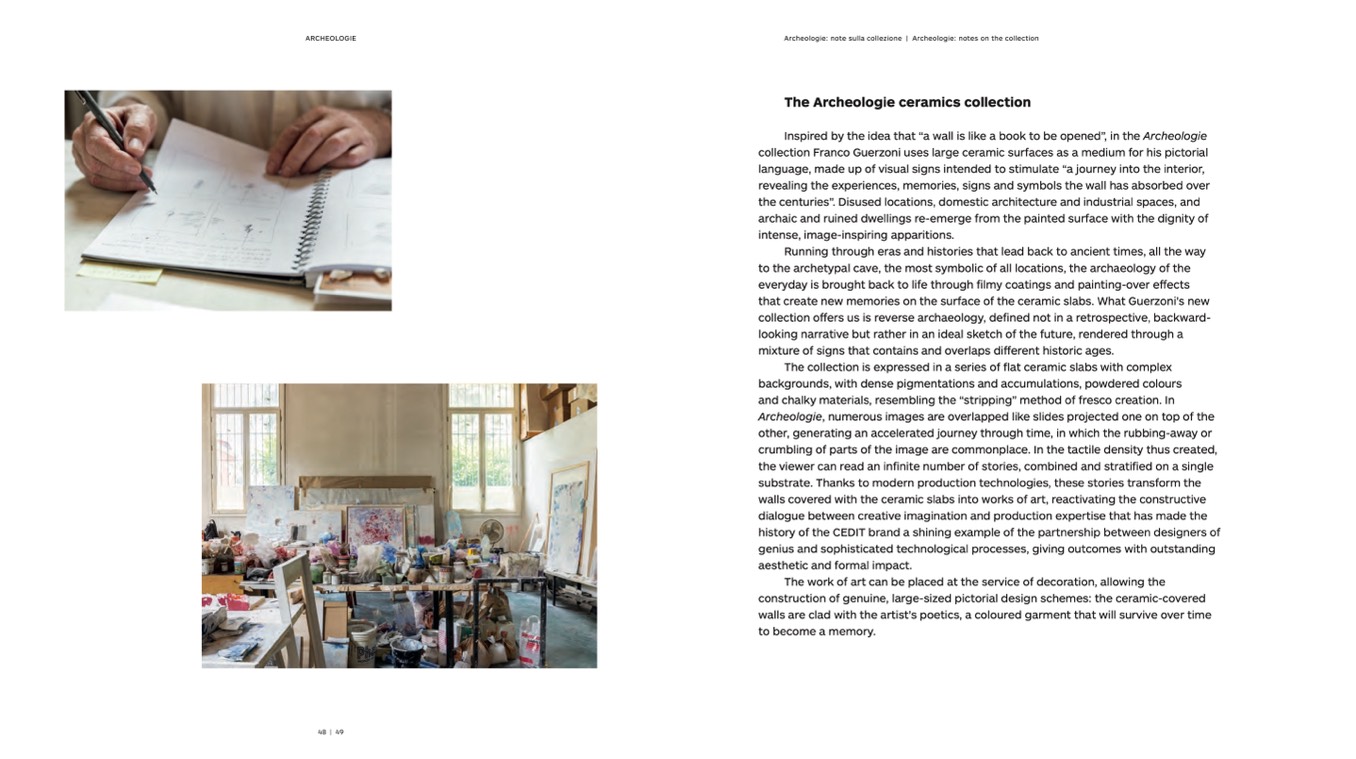
ARCHEOLOGIE
Archeologie: note sulla collezione | Archeologie: notes on the collection
The Archeologie ceramics collection
Inspired by the idea that “a wall is like a book to be opened”, in the Archeologie
collection Franco Guerzoni uses large ceramic surfaces as a medium for his pictorial
language, made up of visual signs intended to stimulate “a journey into the interior,
revealing the experiences, memories, signs and symbols the wall has absorbed over
the centuries”. Disused locations, domestic architecture and industrial spaces, and
archaic and ruined dwellings re-emerge from the painted surface with the dignity of
intense, image-inspiring apparitions.
Running through eras and histories that lead back to ancient times, all the way
to the archetypal cave, the most symbolic of all locations, the archaeology of the
everyday is brought back to life through filmy coatings and painting-over effects
that create new memories on the surface of the ceramic slabs. What Guerzoni’s new
collection offers us is reverse archaeology, defined not in a retrospective, backward-
looking narrative but rather in an ideal sketch of the future, rendered through a
mixture of signs that contains and overlaps different historic ages.
The collection is expressed in a series of flat ceramic slabs with complex
backgrounds, with dense pigmentations and accumulations, powdered colours
and chalky materials, resembling the “stripping” method of fresco creation. In
Archeologie, numerous images are overlapped like slides projected one on top of the
other, generating an accelerated journey through time, in which the rubbing-away or
crumbling of parts of the image are commonplace. In the tactile density thus created,
the viewer can read an infinite number of stories, combined and stratified on a single
substrate. Thanks to modern production technologies, these stories transform the
walls covered with the ceramic slabs into works of art, reactivating the constructive
dialogue between creative imagination and production expertise that has made the
history of the CEDIT brand a shining example of the partnership between designers of
genius and sophisticated technological processes, giving outcomes with outstanding
aesthetic and formal impact.
The work of art can be placed at the service of decoration, allowing the
construction of genuine, large-sized pictorial design schemes: the ceramic-covered
walls are clad with the artist’s poetics, a coloured garment that will survive over time
to become a memory.
48 | 49

